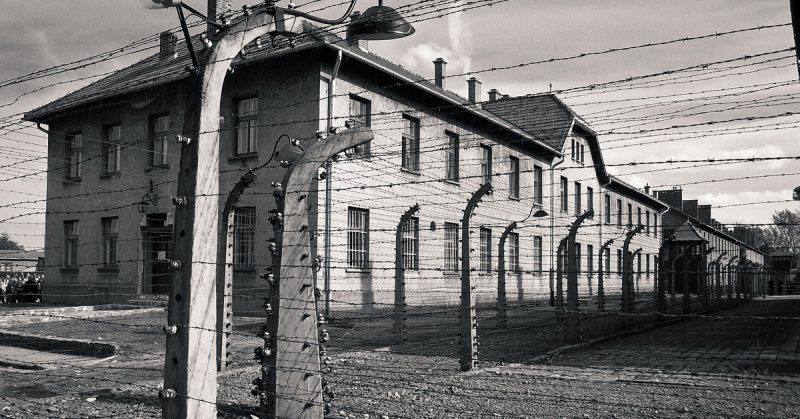One of the most misunderstood of all the Holocaust victims were the Sonderkommando or ‘special squad’. These were the men selected from the incoming prisoners at Auschwitz-Birkenau who were forced as slave laborers to process and dispose of the bodies of their fellow Jews that had been gassed in the extermination chambers.
These men were in turn marked for death and on the 7th October 1944, in response to the fear that they were to be deported and killed, they revolted. They used whatever weapons they had in hands such as tools and rocks and attacked their SS guards. The group splintered, with some setting buildings on fire, some attempted to flee, and some who were some distance from the main camp killed their overseer and tried to flee into the surrounding forest. Unfortunately, most of these men were killed before they had covered more than a few miles from the camp. All in all around 450 men were killed in the uprising, and sadly it did little to stop the extermination of prisoners at the camp.
This revolt was one of the untold stories of WWII. The reason most often given is that the role that these men played as the Sonderkommando has been shrouded in myth and is not often openly discussed. They were held prisoners away from the general population of prisoners and even amongst the general population their jobs, and thus the men themselves, were discussed in whispers.
The myth that they were unfeeling psychopaths and often drunk were circulated along with the lie that they had given up their humanity to gain a few more months of life. These untruths have been perpetrated since the war, but the truth behind the man has come to light in the, so called “Scrolls of Auschwitz”.
The men of the Sonderkommando made the effort to try and record what was happening within the camp. They smuggled photographs of what was happening, out of the camp, and these photographs are the only record of what happened inside. They also wrote about what was done and buried the journals in the grounds of the crematorium. These writings came to light between 1945 and 1980 and showed that the resistance of these men started long before the ill-fated revolt. The recorded history shows the agony that these men endured and their burning desire that the rest of the world should know what they saw on a daily basis.
It is sad that since the war, little has been said on the subject of these treatises and that the myths have been allowed to perpetuate. Many Holocaust survivors were met with questions about what they did to survive when thousands of others did not, what did they compromise and to whom? The men of the Sonderkommando portrayed this conundrum more than most.
The cinema and books have continued the untruths about this group of slaves. Books published after the war have characters based upon the Sonderkommando but invariably these characters are portrayed as morally bankrupt and psychologically damaged. There are many examples in the film as well, where characters of the Sonderkommando are portrayed as anti-heroes.
Perhaps we should ignore the fiction and film and rather go back to the writing of the men themselves; go back to the ‘Scrolls of Auschwitz”. This work shows the men in their true light, mourning their relatives, describing the memories associated with their relatives, recording the helpless feeling of not being able to save close family members. The story of the revolt is laid bare for all to read and there on the pages is the story of these men, their feelings and their battle with the task they had to fulfill, Scroll.in reported.
These men were not the unfeeling robots that have been portrayed in the popular literature and film. They felt as deeply as we all do and they were deeply traumatized by what they had to do. They deserve our understanding, not our condemnation.
